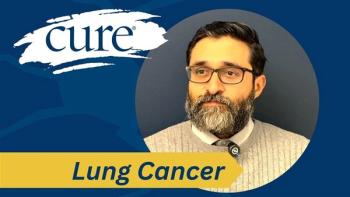
Late Effects From Brain Tumor Treatment Highlight Need for Survivorship Care
Brain cancer survivors are living longer, highlighting the importance of survivorship care for this population.
Now that patients with brain tumors are living longer, more attention should be given to survivorship care plans for this population. However, only about 11.1 percent claim they were given a survivorship care plan when polled by researchers at the Perelman School of Medicine at the University Pennsylvania.
“With the five-year survival of patients with brain tumors increasing as treatment modalities are optimized, there are a large number of brain cancer survivors who experience long-term sequelae of their treatment,” the researchers wrote. “Patient-reported outcomes represent an important and often unrecorded aspect of survivorship.”
To better understand the long-term effects of brain cancer treatment, the researchers used an internet-based tool where survivors or their caregivers could answer questions about demographics, diagnosis, treatment courses and patient-reported outcomes — including any lasting effects.
Overall, data was collected from 254 people who underwent treatment for brain cancer. About a quarter (25.4 percent) of them reported that they were living with metastatic disease, while 14.5 percent were experiencing recurrences after their treatment. The most commonly reported late effects included cognitive changes, fatigue, skin changes, hearing loss, weakness and numbness.
Interestingly, the frequency of these maladies differed among various age groups and time since treatment. Differences were also seen based on the type of treatment that patients underwent, however, they were not statistically significant.
Twelve out of 13 responders (92.3 percent) who were diagnosed between the ages of 18 and 25 reported hearing loss, tinnitus (ringing or buzzing in the ears) and vertigo. However, less than half (44.8 percent) of patients in other age groups reported the same effects.
On the other hand, younger patients experienced fewer issues with learning disabilities or memory loss than older patients — 33.3 percent versus 50.4 percent, respectively.
Patients aged 51 to 60 years reported increased rates of numbness or tingling (66.7 percent), cognitive changes (93.3 percent), strength loss (66.7 percent), fatigue (92.9 percent) and changes in skin color or texture (76.9 percent).
While zero survivors over the age of 61 reported vision loss, 23.1 percent of patients in other age groups reported that they experienced partial vision loss or blindness.
“The information provided here may be of use in informing patient counseling and informed consent process, as well as improving survivorship care offered to patients who have completed active treatment for primary brain tumors,” the researchers wrote.
Differences in late effects also varied depending on when patients were diagnosed. Those who were diagnosed five or more years prior to being surveyed were more likely to experience sexual dysfunction than those diagnosed less than five years ago (32.4 percent versus 18.8 percent, respectively); hearing loss, tinnitus or vertigo (100 percent versus 42.4 percent); and numbness or tingling of the extremities (64.7 percent versus 41 percent).
Survivors who were diagnosed within the last five years reported increased fatigue (76.2 percent versus 56 percent); impaired speech or difficulty walking (52.7 percent versus 33.3 percent); and partial or full vision loss (22 percent versus 6.52 percent) compared with those diagnosed less than five years ago.
Since memory loss and cognitive impairment is a common side effect of cancer treatment, the researchers did admit that this could be a limitation, given that their study relied on patient reports.
In addition, the researchers noted their findings warranted further investigation into late effects from brain cancer treatment, as well as the importance for survivorship care.
“More widespread awareness of survivorship care plans, as well as further study of their benefits and disadvantages should be further investigated,” they wrote.





